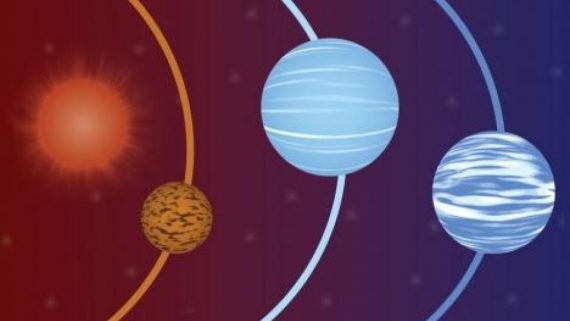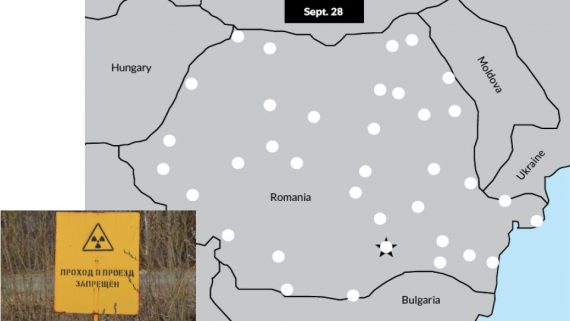The #DailySpace brings you the universe at 10am PST / 1pm EST / 5pm GMT on twitch.tv/CosmoQuestX. Today’s #spacenews includes the following stories:
- https://nature.com/articles/s41567-019-0592-7
- https://www.quantamagazine.org/suns-puzzling-plasma-recreated-in-a-laboratory-20190729/
- https://www.wired.com/story/physicists-made-a-blazing-hot-plasma-doughnut-to-study-solar-wind/
Yesterday I received a small flurry of emails just as we were getting ready to go live, and I thought that meant we’d have a wealth of stories for today. It turns out, on further inspection, that I had several releases each for two stories that demanded a lot of attention.
In the first of these stories, University of Wisconsin-Madison graduate student Ethan Peterson has published results of a new experiment that recreates the Sun’s plasma spirals. As was stated so clearly by “The Might be Giants”, “The sun is mass of incandescent gas” and in this experiment a very small amount of helium was pumped into a 3-m spherical vacuum chamber and heated to more than 150,000 degrees, recreating the Sun’s plasma. To set it swirling, in a pattern called a Parker Spiral, a bar magnet to the system and ran electrical an current that started the plasma spinning.
This Sun in a Sphere model doesn’t fully recreate the sun’s outer layers – but this simplified model is a start. The composition of atoms isn’t as diverse as the Sun, the the density is different, and in a system this small it isn’t easy to get the same variety of energy levels we see in the Sun. These differences will effect the details, but it’s cool to see the big picture coming together in comparatively little experiment.

- http://news.mit.edu/2019/tess-discovers-three-planets-nasa-0729
- https://www.nasa.gov/feature/goddard/2019/nasa-s-tess-mission-scores-hat-trick-with-3-new-worlds
- https://news.ucr.edu/articles/2019/07/29/nasas-tess-mission-finds-missing-link-planets
In other news, the TESS mission has, as it was designed to do, found more planets. At this point, I’m not sure that alone is newsworthy, but this particular discovery garnered three different press releases, from Goddard, UC-Riverside, and MIT. Three press releases seems appropriate because this press release talks about the discovery of 3 different exoplanets orbiting one star.
In this graphic, which comes from the MIT release, these worlds are shown tremendously not scale with their star.
This system has a red dwarf in its center, and so far three worlds have been found orbiting it, all of which are relatively small in the grad scheme of planets. The innermost world is just 1.2 Earth masses and is assumed to be a rocky world. The outer two are 2.4 and 2.1 Earth masses and are a size that is rarely seen. Significantly smaller than Neptune and Uranus, are 17 and 14.5 Earth masses respectively, these sub-Neptune / Super Earth objects are transition objects that for whatever reason haven’t previously been generally found around other stars.
The research, led by Postdoc Maximilian Gunther, points out that this is an evolved system, with a red dwarf that has evolved past it’s active youth, and is now constant in brightness. This consistency in its light means scientists will be able to measure the atmospheres of these planets as well as potentially the radii and other qualities. This will help us understand how planets form at intermediate sizes, and maybe even clarify if terrestrial worlds and gas giants form via similar means. There is a lot we don’t know about planet formation, and this system will hopefully help flesh out our data, and constrain theoretical models in ways that bring us a little bit closer to a model that works.

In our final story of the day, I have a tale of an experiment gone terribly wrong and a scientific sleuthing that revealed this accident that no one wanted to talk about.
Back in September of 2017, atmospheric monitors across Europe began to detect low levels of radioactive material from an unknown source. This cloud lingered through October, carried by air currents in a plume that moved East to West, as is shown in this animation of data from Romanian sensors. Analysis of this material found that it was rich in Ruthenium-106, an element that doesn’t occur naturally on Earth, but that can be created in nuclear reactors.
No nation fessed up to being responsible for this radiation, and theories that it could be from a satellite that fell from orbit were disproven by the data – it turned out that the radiation had higher concentrations at lower altitudes, which isn’t what is expected from a satellite accident.
This meant someone screwed up on the surface of the planet.
Not long after this plume was discovered, Russian scientists from the Mayak Production Association, who had promised to provide radioactive materials for an Italian neutrino experiment, said in an Email obtained by Science News and dated December 8, 2017, that there were “unexpected problems” during purification of the materials. What they were trying to make, cerium-144, can only be created by processing spent fuel from a nuclear reactor, and more importantly, it requires the processing of not-very-safe fuel that is only a couple years old. The ratio of Ruthenium 106 to Ruthenium 103 that was observed was consistent with the processing of 2 year old fuel being processed.
In a new study published in the Proceedings of the National Academy of Sciences, and lead by Georg Steinhauser, it is laid out how the timing of Mayak failure to produce materials, and the appearance of the radioactive plume, point to nuclear accident of small but measurable impact on the environment.
Had the processing not failed, Italian researchers would have been able to use the materials to search for the theorized sterile neutrino. Everyone involved knew that processing the radioactive materials was dangerous and difficult, but pursiut of a particle that may not even exist drove them to try anyways.
This kind of danger is often considered acceptable to scientists, and history is punctuated with experiments that had at least a few people asking, “Will this destroy our planet our maybe even our universe.” In this case, the risk wasn’t as extreme, but the reality was, this time things would go sideways, and instead of doing a physics experiment, we radiated Europe in a not dangerous, but still not good kind of way.
Given this publication, one would hope that Mayak would admit to what is believed to have happened. As of this story’s writing however, they are still denying this story. In a quote provided to the Science News, Rosatom, the Russian agency that oversees Mayak, states “Both the national regulator and experts from an independent international inquiry inspected the Mayak facility back in 2017 and found nothing to suggest that the ruthenium-106 isotope originated from this site.”
Join us tomorrow for more Daily Space news – and keep mapping Bennu!




 Join the Crew!
Join the Crew!
 Escape Velocity Space News
Escape Velocity Space News
0 Comments